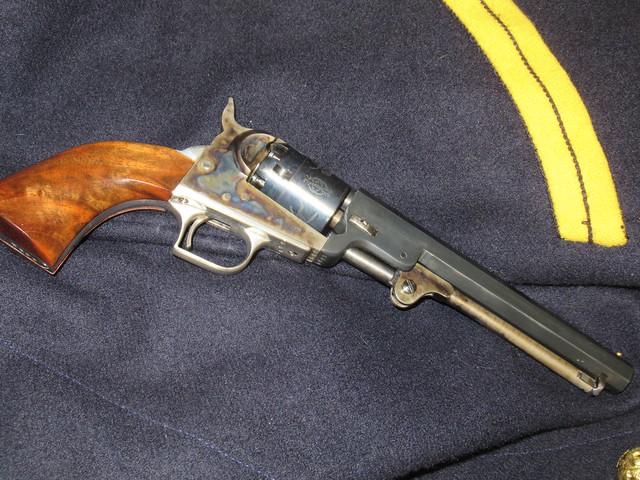That is an astonishing collection!
Kerosene works very well as a soak, after removal of the wooden stocks. Kerosene is cheap (relatively speaking), it penetrates, and as far as I know it won't alter the finish on the metal. Many folks may not realize that kerosene is the primary ingredient in Hoppe's No. 9.
If you need to use an abrasive, bronze wool is a good choice, much better than steel wool for this type of work. It will take off surface rust and crusted filth, but you have to scrub mighty hard to make it take off blueing. Brownell's has bronze wool, and I actually found some nearby in a local hardware store a couple of years ago.
Peacemaker Specialists sells sets of two Colt-specific hollow-ground gunsmith's screwdrivers, which I believe are made by Grace. As the name implies, these folks specialize in the Colt SAA unmentionable revolvers, which don't differ that much from Colt's older percussion wheel-guns. You might even call them up and discuss what you have. They are primarily a gun smithing service and may provide some helpful suggestions. Again, they specialize in the somewhat later Colt single actions, but I doubt they are entirely ignorant with regard to percussion revolvers. They have a nice website, but I'm unable to post a link on the device I'm using right now. They are easy to find with a Google search.
I'm not sure what to recommend with regard to nipple wrenches. With the collection of shootable reproductions you have, chances are pretty good that you know more about nipple wrenches than I do. I have acquired a variety of them, but I wouldn't consider any of the nipple wrenches I've seen on today's market to be top-of-the-line, precision tools.
Good luck with your restoration project! We hope you'll submit periodic progress reports, and share any techniques or insights the rest of us might find useful.
Best regards,
Notchy Bob




 IMG_0689
IMG_0689